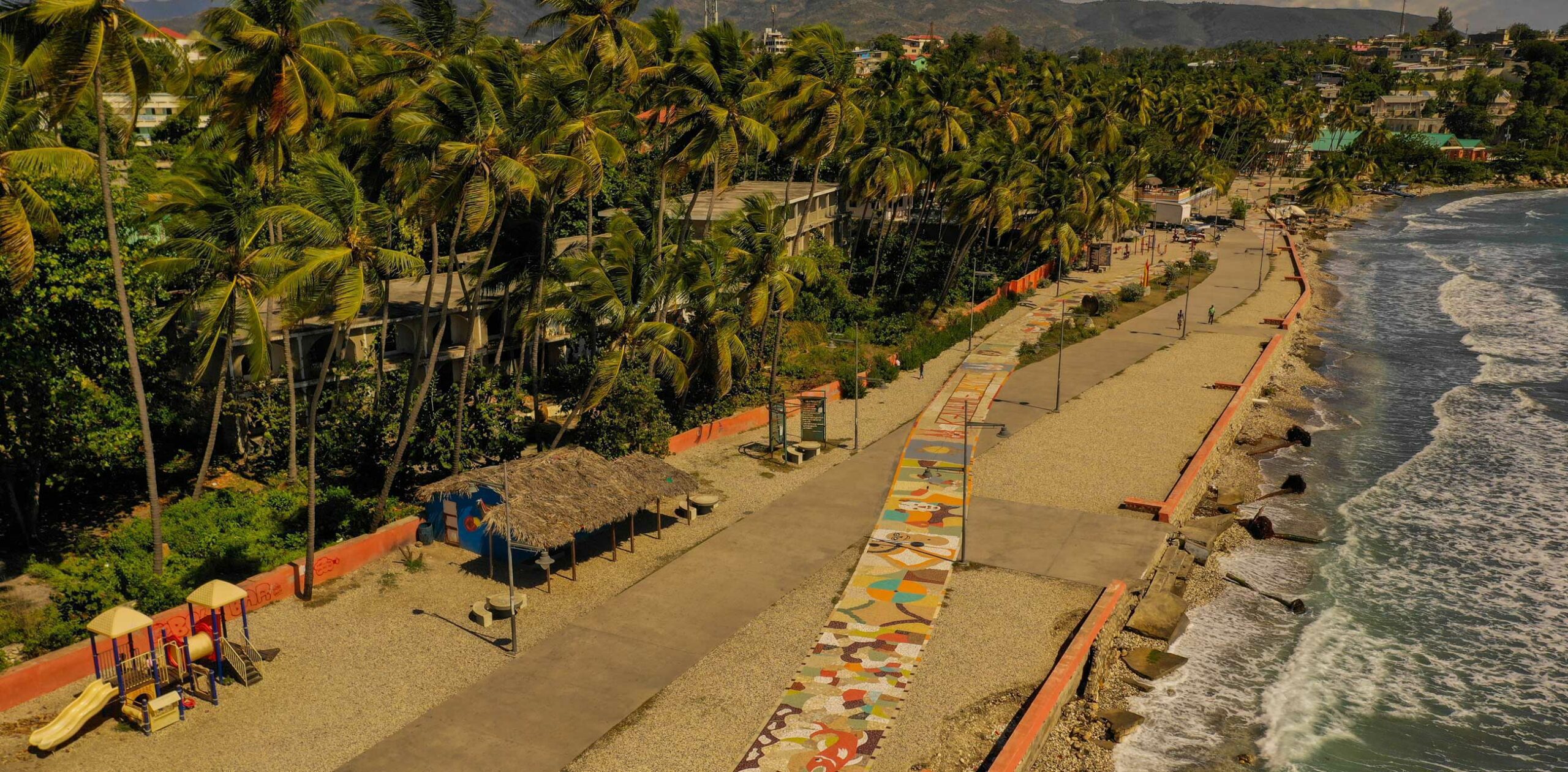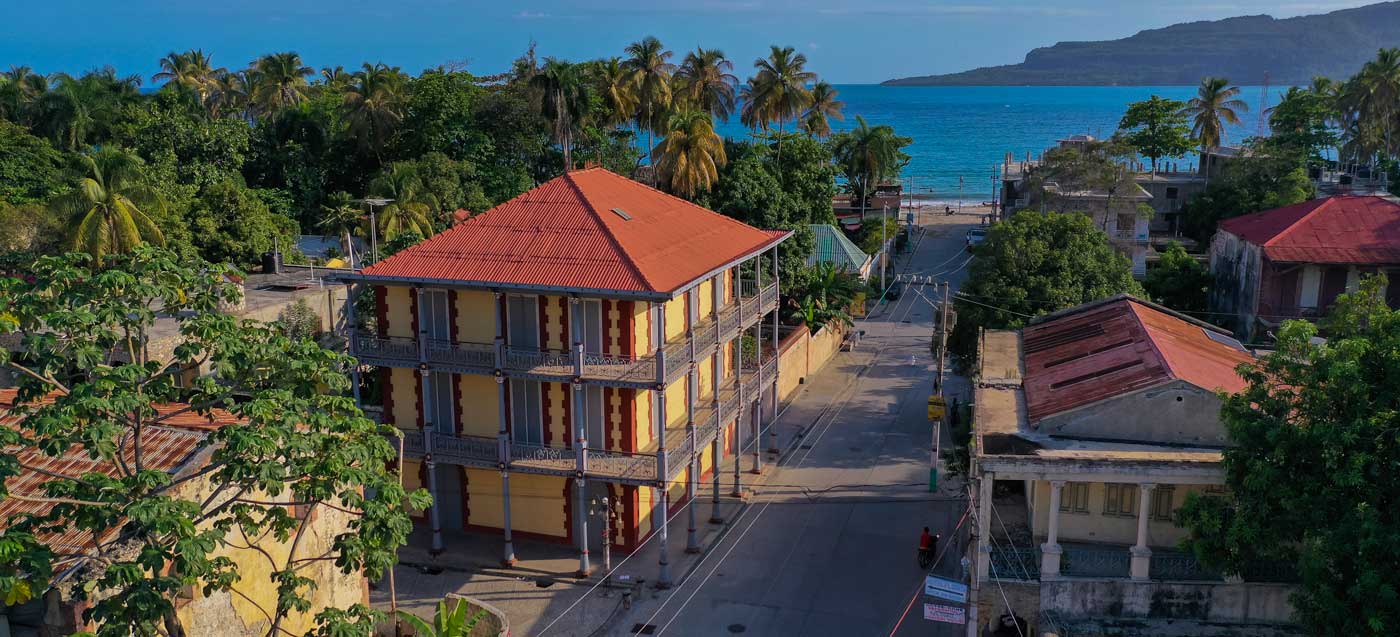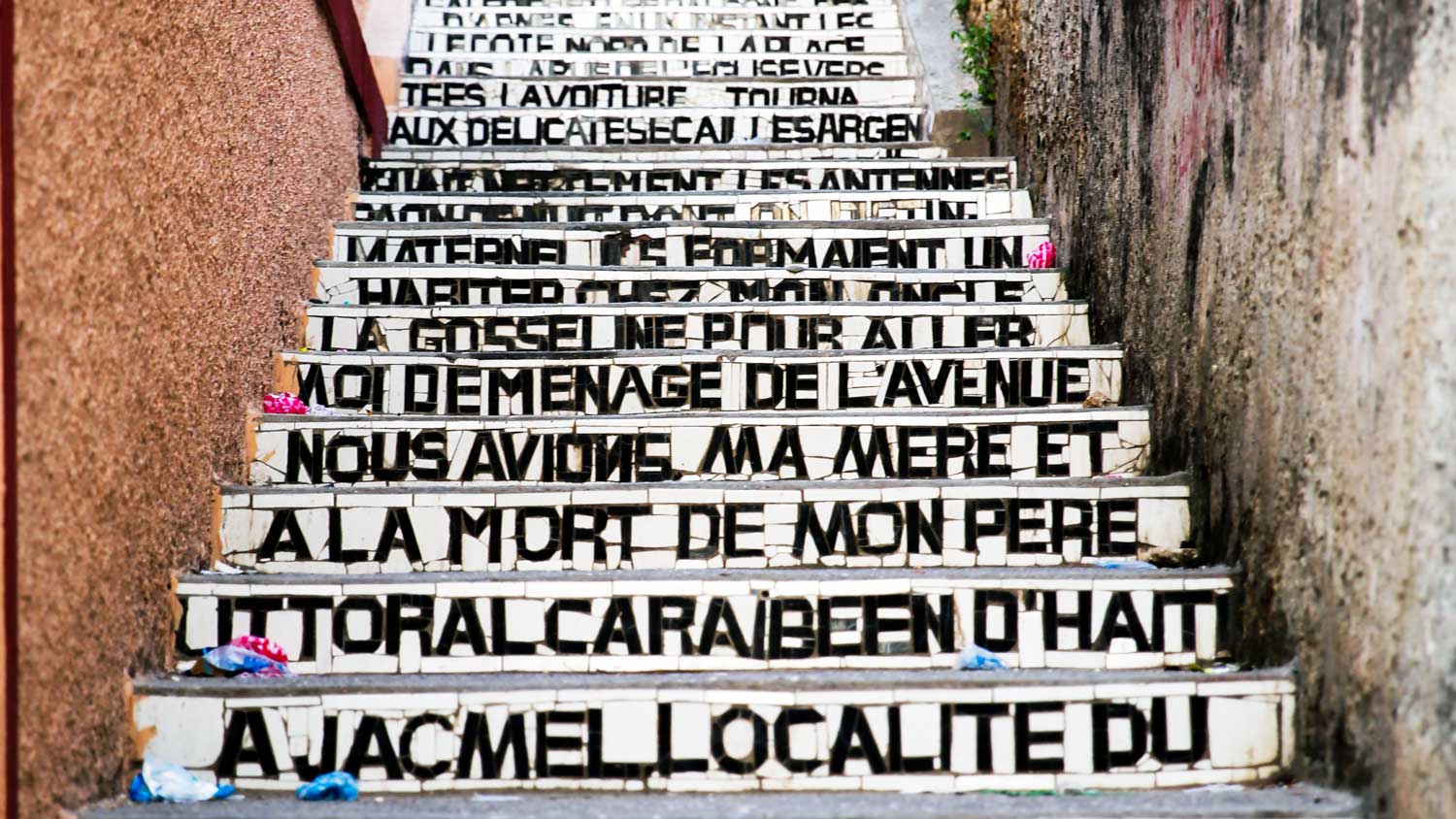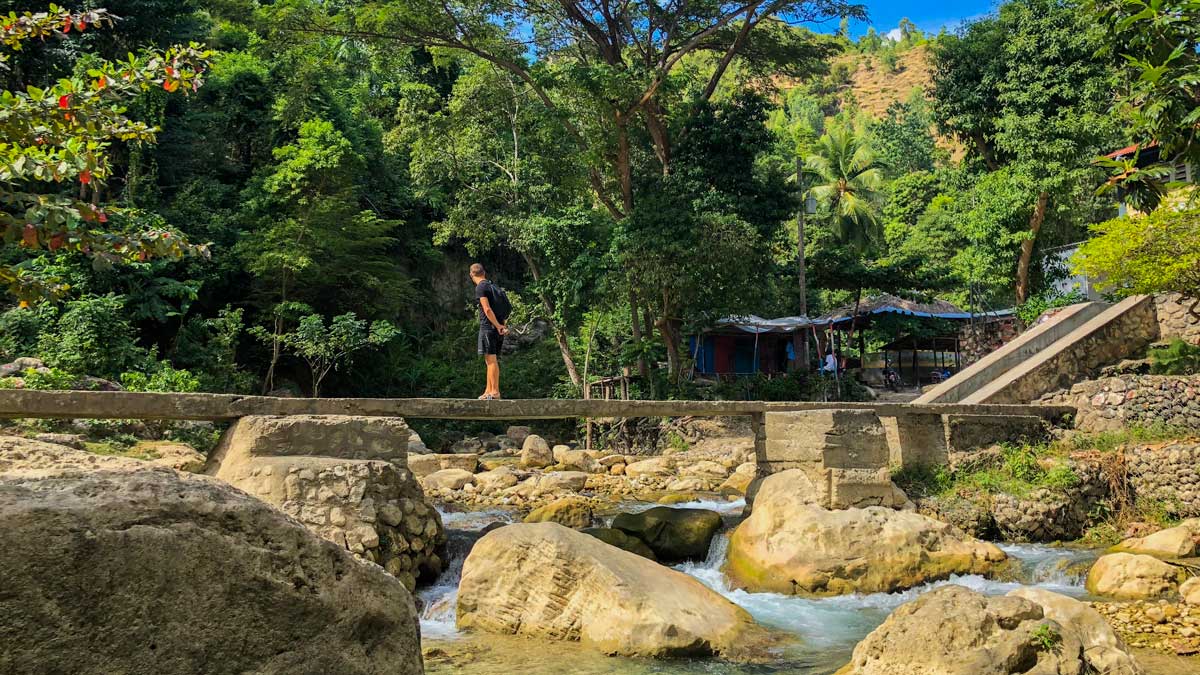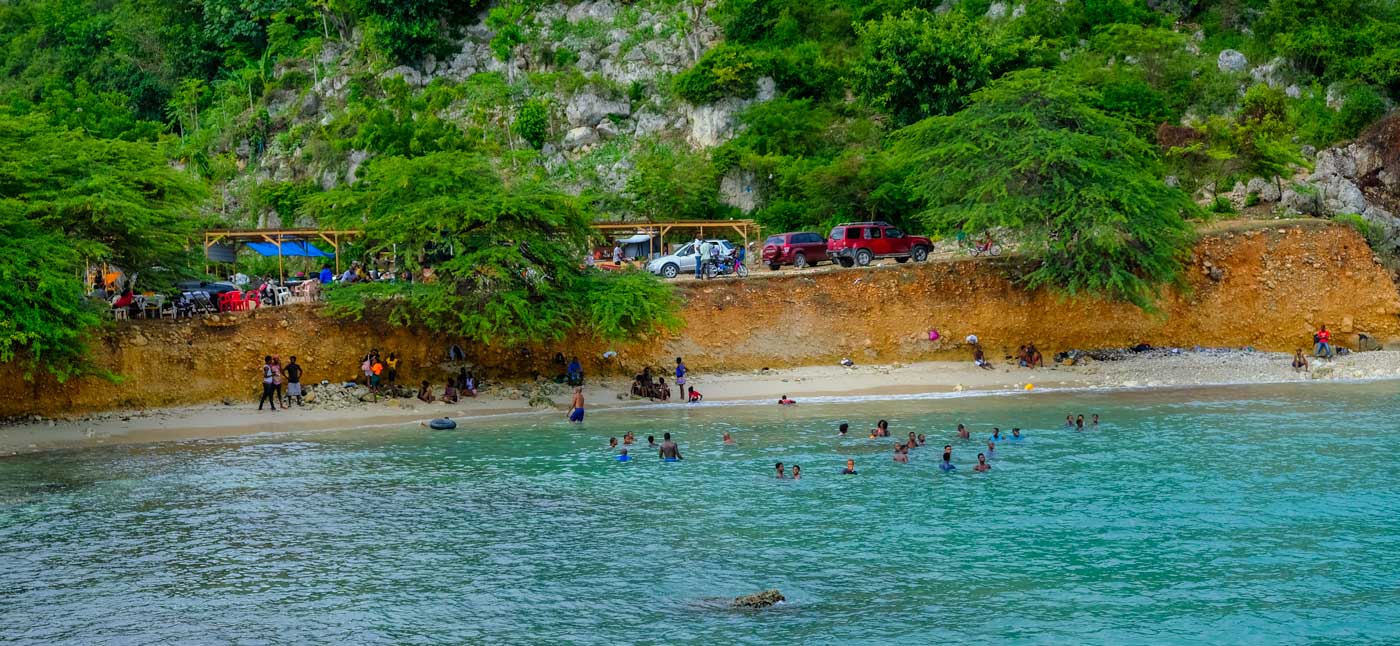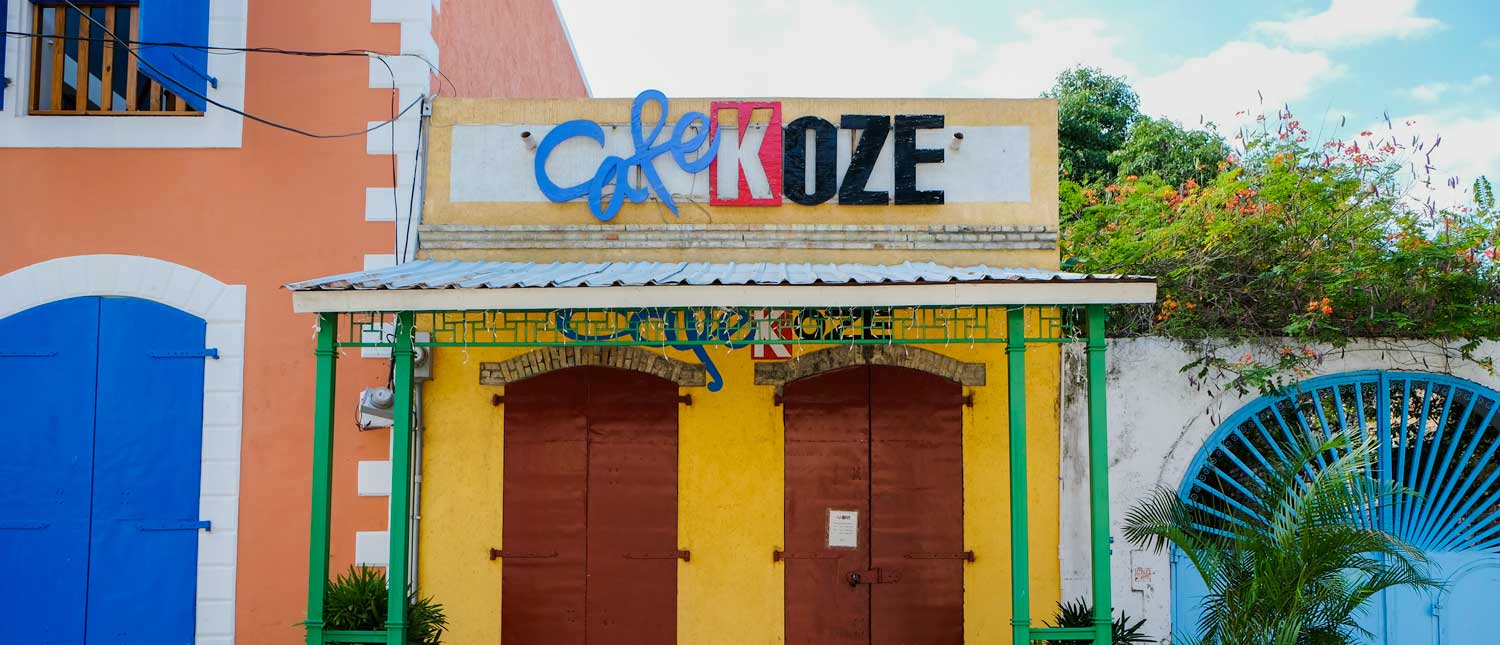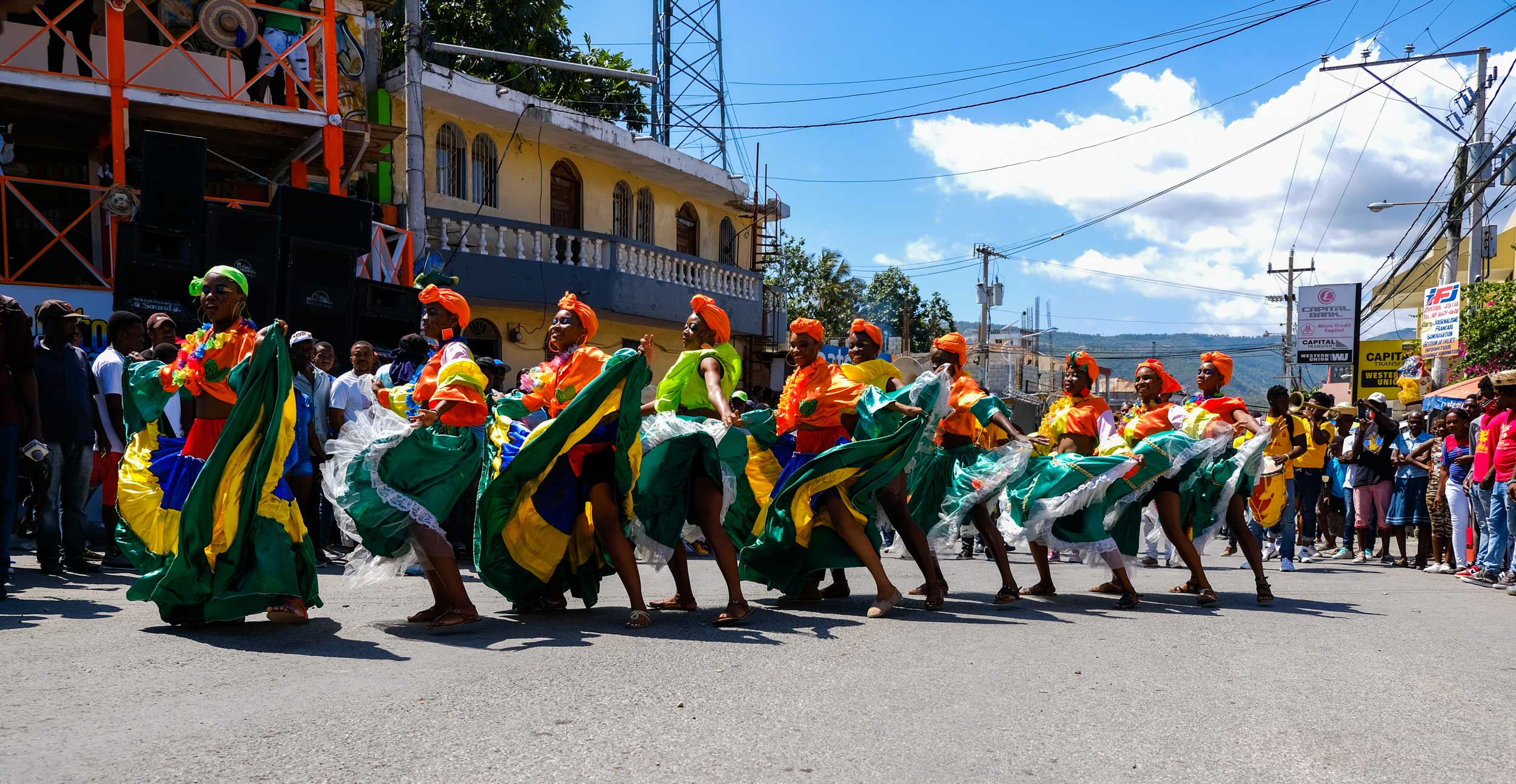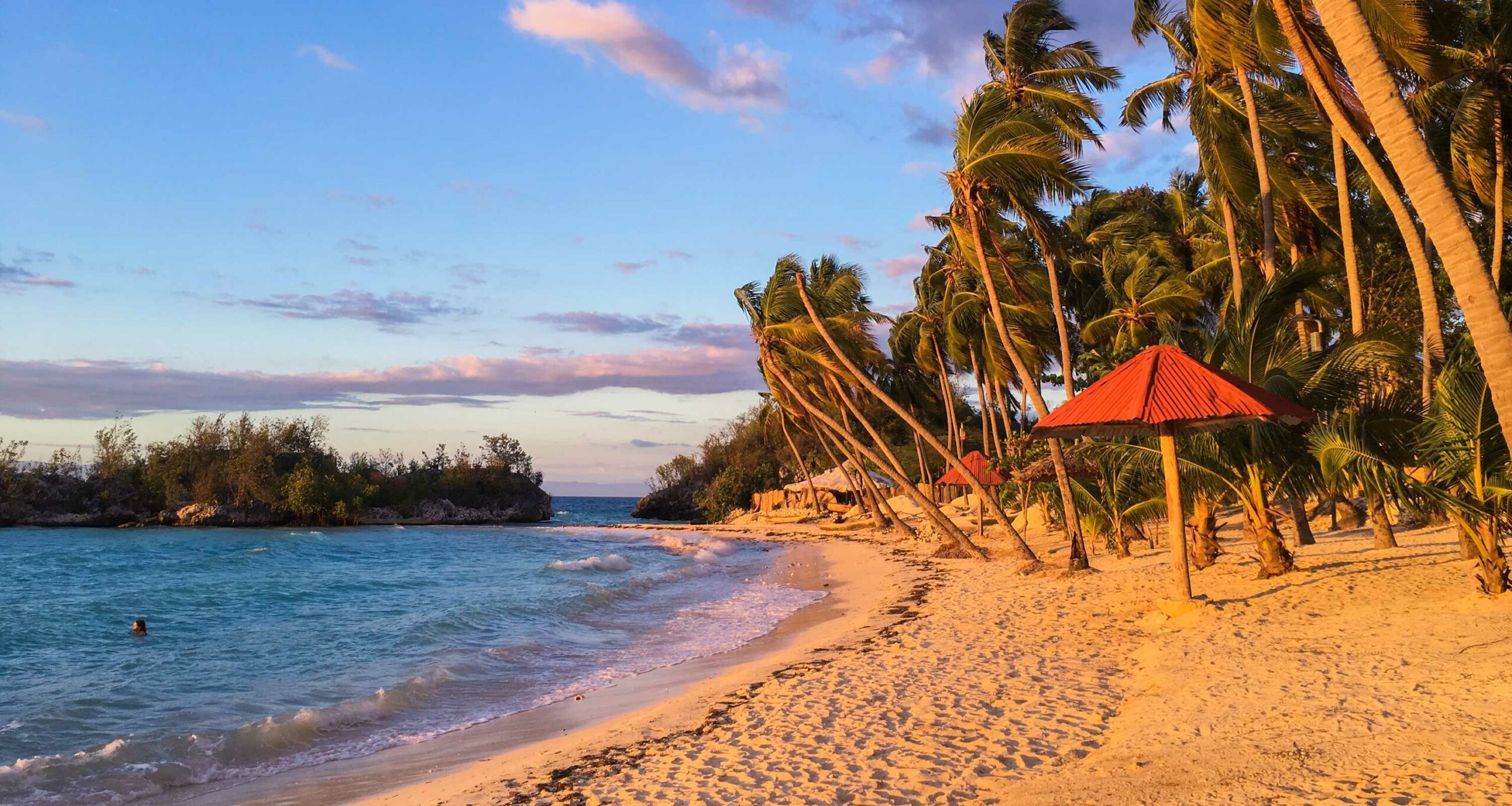
Photo: Tyler Welsh
Kokoye Beach
Looking for a weekend destination not far from Port-au-Prince? You’ll find the low-key glamping experience at Kokoye Beach that is an altogether different sort of luxury. Set into the unrivaled beauty of Haiti’s south coast, the pristine cove of Kokoye is just an hour’s boat ride from Petit-Goave.
Leave your troubles and your backpack in the tent provided, enjoy seafood served up by a local host, and spend your days swimming, snorkeling and drinking rum punch in a cove worthy of a scene from Pirates of the Caribbean.
“Glamping” (glamorous camping) is a popular alternative to both low-convenience regular camping and high-priced but underwhelming hotels, but what really sets glamping apart from either is the access it affords to wilderness, and is the uniqueness of the experience.
Kokoye Beach is one of the few beach excursions in Haiti that is set up for tourists, with all-inclusive boat trips departing daily. It’s a way to experience the white sand and lagoon-blue wonders of Haiti in comfort and on a budget. The quality of services in Kokoye won’t disappoint. This is Glamping with a capital G.
Raw nature
Rocky outcrops stretch out on either side of the beach, bookending a pristine inlet. In the middle, an expanse of sparkling water stays tranquil and wave-free 90% of the time. It’s ideal for paddle boarding, snorkeling, kayaking and swimming. The water and white sand are pristine – the beach is maintained by local associations to keep tourists coming back for more.
Palm trees line white sand beaches that stretch into aqua water that is so unbelievably blue you’ll be tagging your Insta stories with #nofilter. The water is waist-deep until 200 meters out, perfect for bobbing the day away with an icy-cold rum punch in hand.
Come sunset, you can wind down lounging around bonfires, listening to local troubadours playing konpa classics on worn drums, and celebrate into the night.
With no electricity nearby, stargazers will be delighted by some of the Caribbean’s starriest skies. On a related note – pack head-torches or flashlights and extra battery packs for any phones and cameras you plan on using. The west of the beach offers access to modern toilets and showers where you can rinse off the sea water at the end of the day.
This is Haiti as it was made to be experienced. A hotel room is a hotel room but when you stay in a tent on the sand, and nap on a hammock strung between two coconut palms, it’s a unique way to feel immersed in the natural beauty this part of the world has to offer. Watching the sun rise over the water with no walls between you, and the sea at your fingertips, can be a life-changing experience.
Beach-side feasts
When you get hungry, you’ll be glad you’re not quite roughing it: a safety net of experienced staff will provide fresh seafood grilled over sizzling embers, and hot coffee in the morning. They’re professional and unobtrusive. Security is provided but never needed.
If sea-to-table and farm-to-fork meals are the new height of luxury, then you’ll be living it up at Kokoye Beach. Haitian coffee, cane sugar and cassava bread with peanut butter and fruit are standard breakfast fare. All ingredients are fresh and as far as possible locally-caught or grown.
If you’ve been initiated into the Haitian traditional of spaghetti for breakfast then you’ll be in for a treat. For lunch and dinner you can order grilled lambi (conch), fish or lobster. The seafood is always catch of the day. Dishes are seasoned with a Haitian mixture of garlic, hot peppers, lime and spices that will have you coming back for more.
Feeling more adventurous?
You can explore sea caves on the north end of the beach, a 15 to 20 minute swim away. Looking for something inland? Hike around the southeast end of the beach to discover the ruins of a swimming pool and a crumbling mansion from a bygone era.
Getting there
Kokoye Beach is located on a remote peninsula south of Petit-Goave, and it is only accessible by boat, or extreme hiking for 2-3 hours. There is no car access, which makes it feel more like an island escape. Visitors can call ahead to reserve tents, sleeping bags, and other comforts with a local host. People like Madam Fanfan (509) 4028 – 31 66 will also be able to help arrange your boat travel.
It’s also possible to arrange for an impromptu water taxi from the pier in Petit Goave. The boat ride time will vary depending on the motor and number of people aboard and visitors can expect to pay more for covered boats. While on the boat ride you’ll see local fisherman in their element, and freediving is a regular sight, as are sailboats sluicing by at slower speeds. The water changes from indigo blue to turquoise to aqua as you skim along the shore toward Kokoye.
Just over halfway there, Bananier Beach – a popular destination in its own right – is usually the first stop. Kokoye Beach is 20 minutes further down the coast.
Tips for making the most of your trip
One way to prepare for the excursion to Kokoye Beach (and make your hosts happy) is by bringing lots of Haitian gourdes in small bills. While 50 gourdes may not go far in Port-au-Prince, the provinces will appreciate the change. On such a remote peninsula, making change is a regular problem so you’ll be doing a service to the local economy by bringing in plenty of 10, 25, 50, and 100 gourde notes. In a pinch, US dollars are accepted in lieu of gourdes.
Whether you’re into a salty, rough-and-ready DIY adventure or plan to take full advantage of the excellent food and facilities services provided by dedicated staff, an excursion to remote Kokoye beach is a great way to relax and reconnect.
Written by Emily Bauman.
Published July 2018
Find Kokoye Beach
External Links
Read more about Kokoye Beach on Trip Advisor

Looking for some cool things to do?

Paradise for your inbox
Your monthly ticket to Haiti awaits! Get first-hand travel tips, the latest news, and inspiring stories delivered straight to your inbox—no spam, just paradise.





